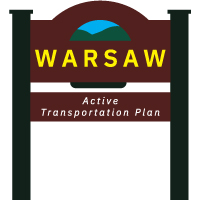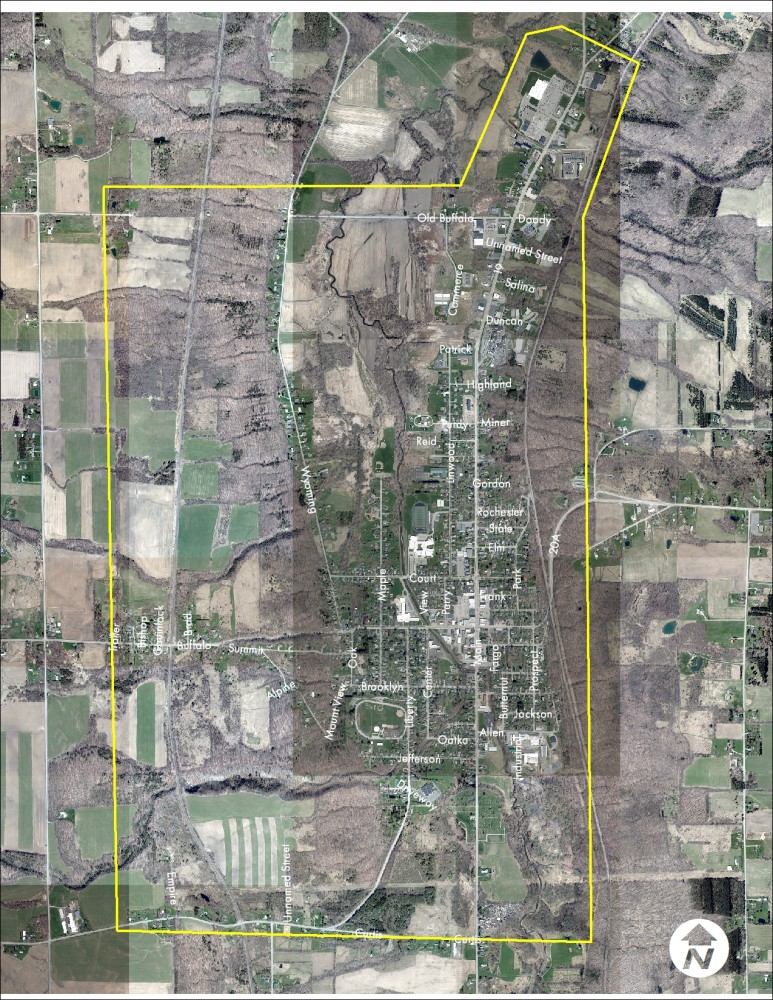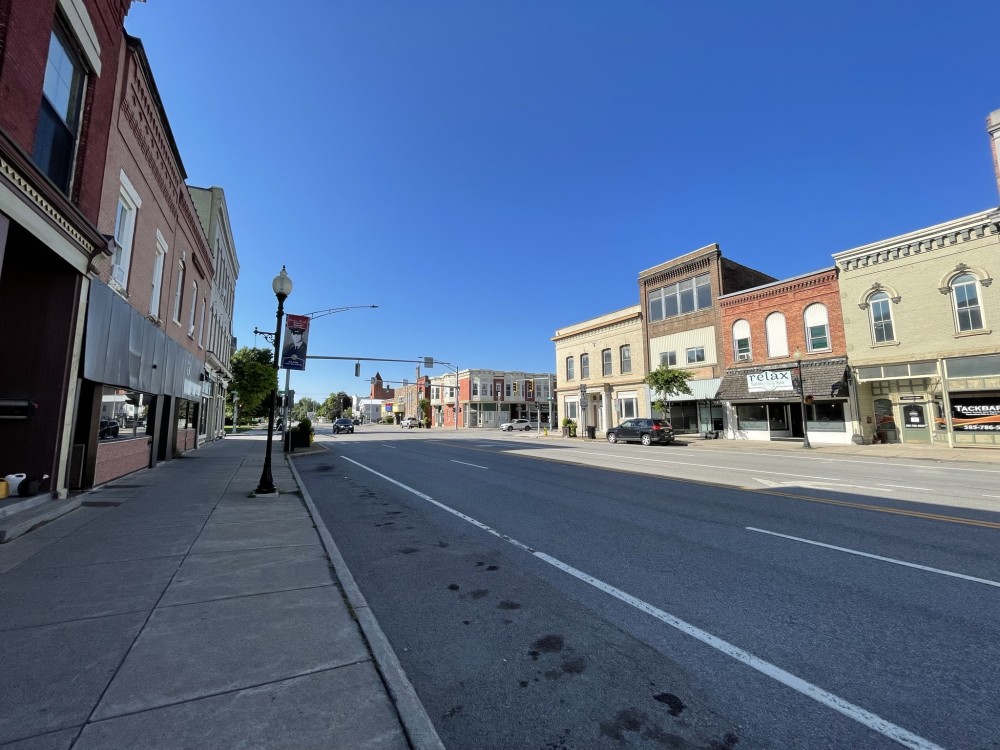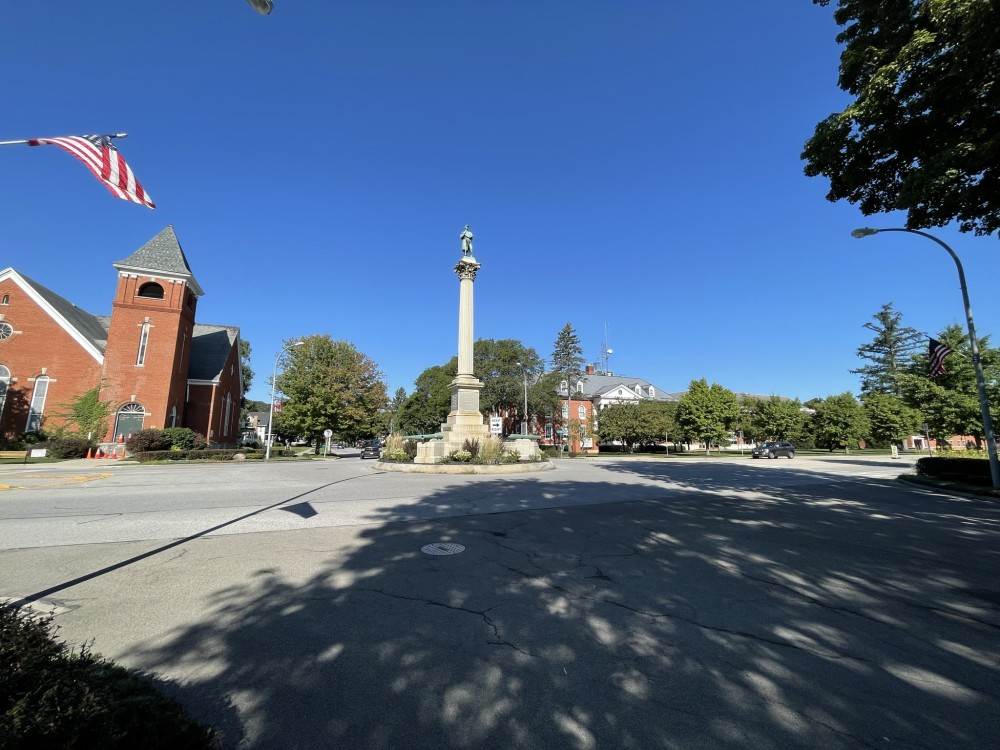Village of Warsaw Active Transportation Plan
Village of Warsaw Active Transportation Plan
The Village of Warsaw, Wyoming County Planning Department, Genesee Transportation Council (GTC), and its partners, are seeking to create an innovative, yet practical plan that reflects the community’s need to increase pedestrian / bicyclist mobility through a safe, comfortable, and interconnected multimodal network for people of all ages and abilities. This is the essence of an Active Transportation Plan (ATP).
The project (UPWP Task #8752) is funded, in part, using federal dollars. The Unified Planning Work Program (UPWP) is the program of federally-funded transportation planning activities undertaken each year by GTC, its member agencies, and other jurisdictions in the Genesee-Finger Lakes Region.
Village of Warsaw Active Transportation Plan - Recommendations Phase
On behalf of the Village of Warsaw, Wyoming County Planning Department, Genesee Transportation Council, and other community partners, we invite you to join us in creating an Active Transportation Plan...
Introduction and Study Purpose
The project area contains diverse land uses and users; educational facilities; dense Village core; and other pedestrian/bicycle destinations making it an attractive place for residents and visitors. However, as evidenced by the reported crash history along NY-19 and US-20A, level of vehicle traffic, and our observations throughout the area, it lacks a complete and integrated plan to comfortably walk and bike to many destinations. As expressed in the RFP, the community has a high percentage of low-income individuals and households with no vehicles. This study will evaluate in detail ways to improve pedestrian and bicycle safety and accessibility by strengthening connections to these places leveraging the current grid-like street network and utilizing low-volume, low-speed parallel roadways, such as Center Street and Linwood Avenue.
The Village of Warsaw Active Transportation Plan will create a forward-thinking and achievable plan that reflects the community's need to increase pedestrian/bicyclist mobility through a safe, comfortable, interconnected multi-modal network for people of all ages & abilities. The plan will emphasize connecting pedestrians/bicyclists to preferred destinations and protecting them from roadways featuring high motor vehicle volume and speed.
The final plan, once adopted, should provide an achievable framework to the Village to realize the following benefits among others:
- Increased healthy & active lifestyles for village residents by increasing mobility and connections to jobs, shopping, and recreation.
- Improved safety, access, and connectivity for all modes of travel.
- Promotion and protection of the historic built environment of the Village.
- Enhanced pedestrian/bicycle infrastructure.
- Mitigation of the likelihood and severity of traffic conflicts.
- Opportunities to capitalize on connections to the natural environment.
- A potential future trail network with connections to other major trail systems.
Project Area
The study area is comprised of the entirety of the Village of Warsaw plus a portion of NY-19 north of the Village within the Town of Warsaw. The study area is shown in the adjacent image.
Background
Nestled in a valley, Warsaw is centered on a historic 19th Century multi-story Main Street with residential, commercial, schools, government, religious and institutional uses. As the County seat, Warsaw is the center of essential government, social service, public safety, and commercial transactions for Wyoming County. Additionally, the Wyoming County Community Health System (WCCH), located in Warsaw offers a regional scope of medical services. A significant percentage of the student population of the Warsaw Central Schools walks/rides bikes to and from school. As a center of essential services, Warsaw is home to large and growing senior citizen and ALICE (asset limited, income constrained, employed) populations who don't own personal motor vehicles. Despite this concentration of services and amenities, there is no network of trails for non-motorized transportation users.
The Village of Warsaw is a nexus for traffic from various sources and locations. The community is located at a crossroads of two major state highways. Traffic on both NY-19 and US-20A pass through the Village. In the past ten years, large-scale, new suburban-style development on US-20A – North Main Street has further increased vehicular traffic volume.
The natural environment of steep slopes and waterways limits pedestrian and bicyclist mobility. Consequently, pedestrians and bicyclists have limited connections/networks to jobs, services, recreation, and shopping. There are Wyoming County Transit bus stops located within the Village, which are primarily used by peope who often have difficulty crossing main highways, navigating side streets, and accessing the bus stops.
The transportation systems have not evolved to meet the emerging needs created due to new development. Within twenty years, the northern section of the Village of Warsaw extending into the Town along State Route 19 has seen significant growth, including large box stores, senior housing, expansion of the County hospital, a new hotel, and several other commercial developments. Despite this growth, there have been no updates to the existing transportation networks for pedestrians, bicyclists, or even cars. Since the COVID pandemic in 2020, foot traffic has increased as the pandemic has increased the use of public spaces, and more residents and visitors are walking to their destinations.
Project Team
Village of Warsaw
- Project sponsor leading the planning project who successfully submitted an application for federal Unified Planning Work Program (UPWP) planning funds.
Genesee Transportation Council
- Metropolitan Planning Organization who administers the UPWP program and oversees the federal requirements to assist local municipalities carry out transportation planning studies.
SRF Associates ( A Passero Associates Company)
- Main point of contact and project management
- Transportation planning and engineering, multi-modal planning, safety assessments, and public participation
Ingalls Planning & Design
- Community design, placemaking, gateways, streetscape enhancements, zone and regulations, visual modeling
- Public engagement
Approach to Project
Step 1: Where are we now?
- Data collection and Gap Analysis
- Implications, and Issue Identification
Step 2: Where do we want to be?
- Community Vision
Step 3: Doing it!
- Priorities, Collaboration, Action Planning
- Measuring Success
1. Existing Conditions Analysis and Needs Assessment
The project team will conduct an existing conditions and needs assessment for current and anticipated uses which will include:
- Research the project background, including historical context, the Village of Warsaw Comprehensive Plan (update currently in progress), the Town of Warsaw Comprehensive Plan and updates, other applicable planning documents, and existing land use, ownership, and zoning.
- Inventory existing and planned pedestrian, bicycle, and other active transportation infrastructure within the study area.
- Further assess motor vehicle traffic volume and direction, safety/crash data, destinations and activity centers, typical origin-destination pairs for all modes, and the presence, condition, and usefulness of any active transportation amenities.
- Determine physical and programmatic needs as well as resource gaps for the study area based on the existing conditions inventory.
- Refine the understanding of the needs of pedestrians and cyclists within the study area by engaging project stakeholders using a mix of public meetings, surveys, stakeholder interviews, and/or focus groups.
2. Recommendations
Recommendations form the foundation of the study by establishing a prioritized actionable framework of alternatives. The findings will be assembled and analyzed to develop a set of recommended projects and strategies based on the assessment of pedestrian and cyclist needs.
- Identify priority projects and design alternatives as well as potential program and policy change to enhance safety and accessibility for pedestrians and bicyclists in and around Warsaw.
- Propose additions to the local bicycle and pedestrian network that connect the Village center to neighborhoods, parks, schools, new development, and natural resources. Each proposed project will include high level feasibility investigation including potential constraints.
- Create a set of recommendations to improve multi-modal circulation/access and establish pedestrian-oriented design standards.
- Verify and properly assign relative levels of public preference, perceived importance, and priority to the various alternatives before finalizing any recommendations.
3. Development of Final Report and Implementation Plan
Having resolved any outstanding concerns related to recommendations, and prioritized strategies, the project team will develop a Draft Final Report for final review. It will:
- Describe the study process and conclusions
- Describe recommendations along with achievable and phased implementation framework for each plan recommendation that is prioritized using stakeholder input.
- Describe common implementation costs and funding sources associated with each recommendation.
- Present to the project stakeholders.




